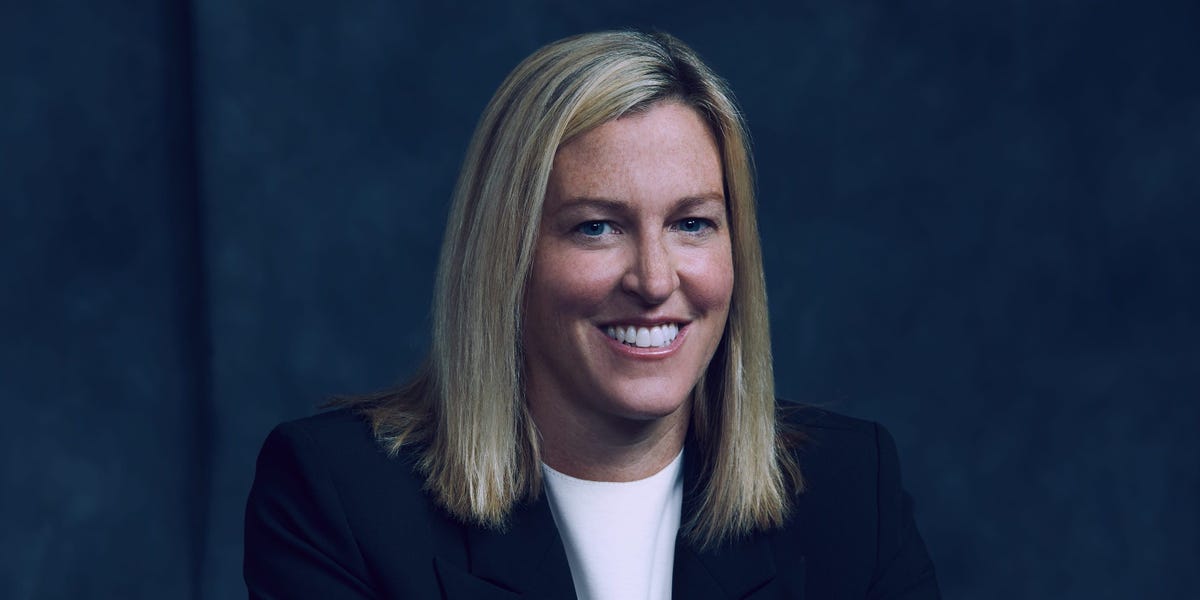Netflix will have its biggest presence in years at tech trade show CES in January, where it will have a booth to promote its new sci-fi drama “3 Body Problem.” Attendees will be able to don headsets to immerse themselves in the series, which premieres in March, while the show’s creators David Benioff, D.B. Weiss, and Alexander Woo will be on hand to chat with press.
But the real action will be happening over at Netflix’s private meeting suites, where execs like newly named advertising president Amy Reinhard will court top brand and ad execs who control millions in ad budgets.
CES, which is produced by the Consumer Technology Association and is known primarily as a showcase for new tech innovations and gadgetry, is making room for a new Hollywood contingent this year. The show takes place January 9-12 in Las Vegas.
It’s not producers and directors but entertainment sales chiefs who’ll be attending en masse, as streamers look to Madison Avenue to turn around their fortunes.
The streamers’ reps hope to interact with top execs from marketers like L’Oréal, Chase, and Walmart — all longtime fixtures of C Space, CES’ entertainment and content track. Advertising and marketing pros made up 7% of CES’ attendees in 2023, per CES.
Overall, exhibitors in C Space are expected to be up 10% for 2024. The space will have an expanded footprint to accommodate new players including Disney, Nexstar Media Group, Nvidia, Paramount, Pinterest, and Reddit, said Patrick Pannett, a CTA spokesperson.
“The ad sales side of the entertainment business is there because they know the brands are going to be there,” Michael Kassan, CEO of the advertising consultancy MediaLink, told Business Insider. Kassan is scheduled for a keynote conversation with Snap cofounder and CEO Evan Spiegel.
Look for topics like the creator economy and the rise of artificial intelligence to dominate the conversation for advertisers, Kassan added. “Brand safety, AI, direct to creator — that’s going to be the story at CES this year.”
Disney, which is making a bigger run at streaming ad dollars with its newly combined Disney+/Hulu app, is taking its annual Tech and Data Showcase to CES for the first time, with top ad exec Rita Ferro leading the charge. The showcase, which is the company’s kickoff to the all-important upfronts TV selling season, is expected to focus on new offerings like shoppable ads and game-like ad experiences.
NBCUniversal’s Mark Marshall will be in attendance to tout the company’s new cross-platform selling tool. He’ll be joined by groups from NBCU’s Peacock.
NBCUniversal announced January 8 that it would expand access to One Platform Total Audience, a new AI-driven approach to improve ad buying across its linear and streaming portfolio spanning NBC, Bravo, Peacock, and more. As NBCU describes it, the platform uses machine learning to reach advertisers’ target audiences in a brand-safe way.
Also in attendance will be execs from Amazon Ads, which is getting ready to launch advertising on Prime Video; ad sales VP Tanner Elton and sports partnership lead Amy McDevitt will be speaking, and Ludacris was tapped to perform. Ads chief Jon Steinlauf from Warner Bros. Discovery, which rolled out its mega streamer Max this past year, is scheduled to attend. And Roku, which is closing in on its search for a new ad sales head, is sending a large contingent. Other ad sellers on the show floor for the first time are Walmart and Vizio.
Streaming continues to grab advertising share from linear TV. IPG’s Magna and WPP’s GroupM have forecast another year of double-digit growth for streaming in 2024. Magna sees US AVOD/CTV/FAST ad revenue increasing 12.9% in 2024 as linear TV declines 8.5%. GroupM called for CTV+ to increase 13.8% globally in 2024, with traditional TV declining 3%. As streamers push their ad-supported tiers, more than two-thirds of Peacock, Paramount+, and Hulu viewers will subscribe to ad tiers next year, Insider Intelligence predicted.
The rosy growth outlook comes with some caveats. The cost advertisers pay for streaming ads is expected to decline as platforms release more inventory, particularly with Amazon unleashing ads on Prime Video. Advertisers also have more options with the fast-growing FASTs (free, ad-supported streaming TV channels), which primarily offer older TV shows and movies.
Streamers show fewer ads per hour than traditional TV, which will limit the movement of ad dollars in their direction. And advertisers are still proceeding and spending cautiously amid economic uncertainty.
That concern will be reflected in attendance, with some agencies sending fewer reps, Kassan suggested: “We need to be there, but do we need to send 50 people?”
This article was originally published in December.
Read the full article here





